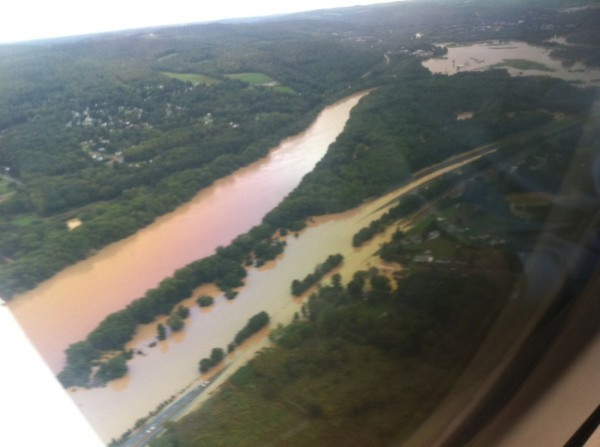Binghamton Boil Water Advisory in Effect Because of Flooding [PHOTOS]

The Broome County Health Department has issued a boil water advisory for all Binghamton water customers as record flooding has left what the mayor calls a dire situation in the area.
This means that all residents must first boil all municipal drinking water before drinking it.
This boil water notice applies to everyone served by the City of Binghamton water supply, including the Town of Binghamton and the Town of Dickinson water districts, a press release from the health department stated. A drinking water standard was violated.
Officials routinely monitor the water for turbidity, also known as cloudiness, in order to determine if it is effectively being filtered.
The department stated that water samples taken on Sept. 8 showed turbidity levels of 14.1 turbidity units.
This is above the maximum allowable standard of 1.0 turbidity units, the department noted in its release. Because of these high levels of turbidity, there is an increased chance that the water may contain disease-causing organisms.
Turbidity has no health effects, but it can interfere with disinfection and provides a medium for microbial growth, according to the department. Turbidity may indicate the presence of disease causing organisms, which include bacteria, viruses, and parasites that can cause symptoms such as nausea, cramps, diarrhea, and associated headaches.
Decades old flood walls were no match for the swelling waters of the Susquehanna River, which forced 20,000 people to seek higher ground as heavy rains from the aftermath of Tropical Storm Lee pushes already swollen rivers higher.
The situation is dire, Binghamton Mayor Matt Ryan told The Associated Press. It's the worst flooding in the history of Binghamton at least since the flood walls were built in the 1930s and '40s.
Tropical storm Lee formed off the Louisiana coast late last week and gained strength while it stayed in the Gulf of Mexico for days. The slow-moving system dumped more than a foot of rain in New Orleans before moving onto Mississippi and Alabama.
Lee's remnants dumped between 4 and 7 inches of rainfall, and up to 10 inches in isolated pockets along the northeast, according to The National Weather Service.
Flood warnings have been issued for Pennsylvania and New Jersey, and a flood watch is in effect for Eastern New York.
Heavy rains from Lee have swelled waterways from Maryland to New England, and have flooded highways and stretched the resources of emergency responders who are already dealing with cleanup efforts from a recent blow from Hurricane Irene.
© Copyright IBTimes 2024. All rights reserved.






















